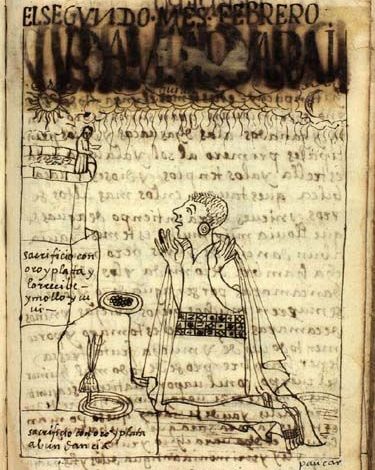Food, Dolls, and Rain: Carnival in Cuzco

Carnival is a time of effervescence and renewal. In Cusco it rains, often heavily, while people play with water, celebrate relations, dance, and eat special food. Not only is this a time in the Catholic calendar, the days before Lent, it is also a deeply indigenous, Andean celebration with probable Inca roots.
During carnival it rains, often heavily and the fields of corn shoot for the sky. The people of Cuzco on the Thursday before carnival–yesterday–celebrate their comadres. Difficult to translate into English, this word refers to the relationship between a couple and the godmother of their children. It is an important relationship in which the growing family, like the growing corn, reaches outward to build a kind of kinship with others.
On the day of the comadres, the city of Cuzco held a competition in which large rag dolls presented a theme which with a heightened sense of irony represented the neighborhood and its women. In this way, contemporary organizations such as the Municipal Organization of Festivities of Cusco, and the Glass of Milk, revitalize old traditions of hanging satirical dolls from posts and balconies in the neighborhoods as a comment on social life.
The prior Thursday was the feast of the compadres, the male counterpart of the comadre. During both feasts people and organizations come into the streets to dance through it with steps appropriate for Carnival, vigorous and hearty.
In the neighborhoods of the city, people gather to share chicha or beer (as well as other drinks) while people perform a yunza by dancing around a tree decorated with presents as if they were its fruit. People take turns hacking at the tree to try to cut it down. The person who finally brings it to earth will organize next year’s celebration.

The festivities with dances, yunzas, and much play with water, flour, talcum, and even paint continues through Tuesday of carnival in a great celebration of the height of summer and the peak of agricultural and social growth and fertility.
Guaman Poma de Ayala in his pictorial and written narrative calls this celebration Hatun Pocoy, or Great Maturation. Not only was it a time when many sacrifices of gold and silver, as well as snails, creatures of the time of rains, were made to the earth deities. At the same time he mentions that this was a time of abundant watery herbs he calls yuyos which the people ate.
In Cuzco today, people eat a dish called thimpu, or puchero. It consists of various stewed meats, tubers, and fruit along with herbs. It is typical of carnival and is shared with family and friends.
The rains fall sweeping the streets with water, just as the yunzas are toppled and troupes of dancers slide through. Carnival is an exciting and invigorating time of joy, sharing, and competition.




